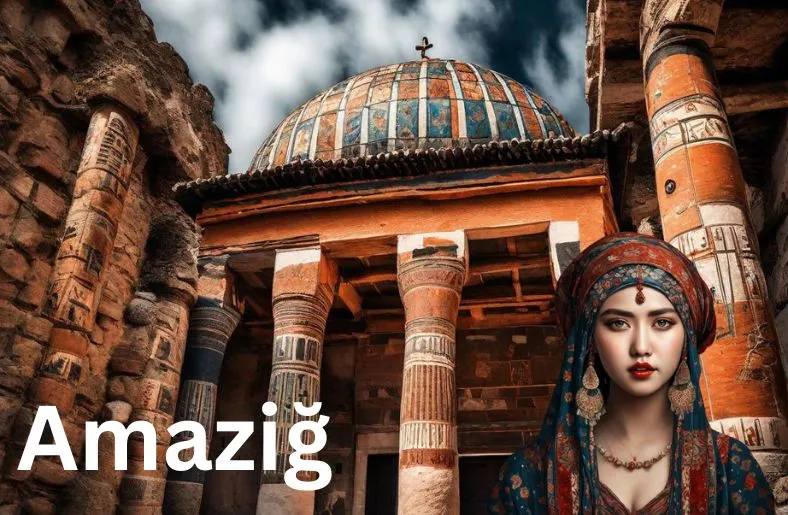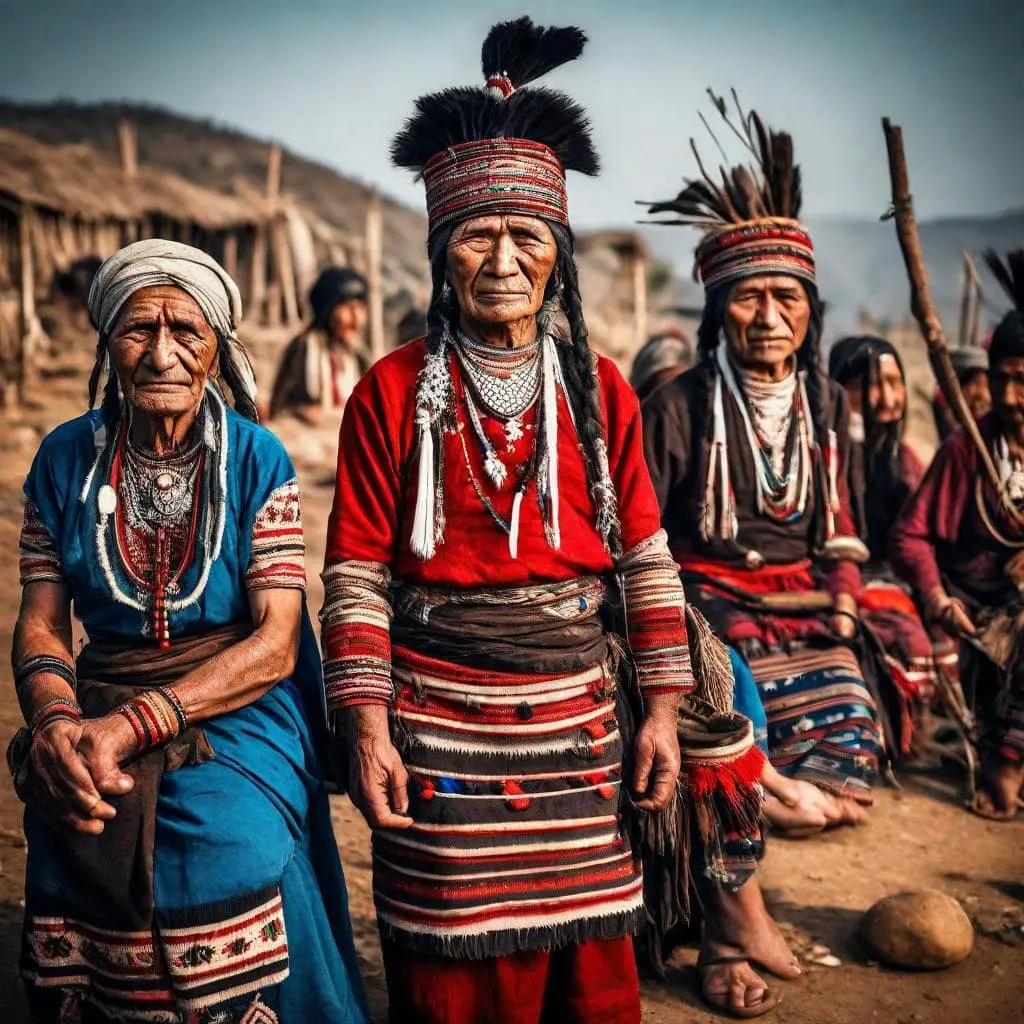In North Africa, the Amaziğ people hold a unique story with origins stretching back millennia. Weaving a vibrant tapestry of culture, they proudly stand as the land’s first inhabitants. Phoenicians, Romans, and Arabs each left their mark, shaping the diverse mosaic of tribes, languages, and customs that define the Amaziğ. But despite facing challenges like colonisation and marginalisation, their spirit remains unbroken. Today, a vibrant movement reclaims its identity, fighting for cultural recognition and language rights. This rich heritage, an essential thread in North Africa’s fabric, holds immense potential for a bright future.
The Amaziğ people are an important part of the fabric of North Africa, and their culture is a valuable asset to the region. They have a bright future and the potential to achieve even greater things in the future.
Unveiling the Amaziğ Tapestry: A Historical Journey
Ancient Echoes
Imagine a rich tapestry woven through millennia, its threads whispering stories of ancient origins. This tapestry belongs to the Amaziğ people, North Africa’s indigenous inhabitants. Their roots delve deep into the region’s soil, predating written history. Throughout their journey, they’ve encountered empires like the Phoenicians, Romans, and Arabs, each leaving a vibrant thread woven into their cultural fabric. The Amaziğ story isn’t just one of endurance but of rich exchange, shaping and being shaped by the diverse encounters that echo through their long and impactful history.
Resilience Through Resistance:
The Amaziğ people, like the Atlas Mountains they call home, have weathered countless storms. Colonisation, assimilation, and marginalisation – each a harsh wind seeking to erode their identity. Yet, their roots run deep, drawing strength from a rich tapestry of traditions and a fierce sense of community.
Remember the Berber kingdoms that defied empires? Hear the echoes of resistance fighters safeguarding their land? The spirit of resilience pulsates through the Amaziğ heart, passed down through generations like the vibrant patterns on their rugs. Each challenge faced, each obstacle overcome, has only further fortified their unique culture, a testament to their unyielding spirit
Echoes of Nomadic Spirit
Beneath endless skies, the Amaziğ people weaved nomadic life into vibrant traditions. Hospitality bloomed like desert flowers, welcoming weary travellers. Music and dance pulsed with the wind’s rhythm, echoing their connection to nature. This constant movement fostered an unbreakable community, its threads woven tight, carrying their unique spirit through generations.
Where Traditions Thrive: Exploring Vibrant Amaziğ Culture
A Mosaic of Languages:
Across North Africa, Amaziğ voices weave a tapestry of tongues. Their ancient song, Tamazight, echoes in millions, intertwined with Berber dialects. Even Arabic, adopted through time, bears their unique imprint. This linguistic mosaic reflects their rich heritage, each word a window to their vibrant culture.
Symphony of Sounds and Rhythms:
The wind whispers through lutes; drums echo heartbeats – the Amaziğ spirit dances in music. Complex melodies, born of vast landscapes, tell stories across generations. Imzad lutes sing ancient tales; bendir drums beat the rhythm of their soul. Each note and move connects past and present, celebrating their unique identity.
Treasures of Craftsmanship
From desert dust to dazzling artistry, the Amaziğ weave stories into clay, thread, and metal. Their hands mould intricate pottery, whispering secrets of ancient traditions. Looms hum, birthing vibrant carpets that echo nomad journeys—silver glints on handcrafted jewellery, each piece a testament to their enduring skill. More than objects, these treasures are windows to a culture where history meets artistry in every thread and curve.
The Bridge Between Past and Present: Modern Challenges and Aspirations
Facing Assimilation
Modern waves crash, yet Amaziğ roots hold strong. They weave traditions, languages alive, music echoing, crafts whispering stories. Resilient as desert winds, they stitch their future thread by thread.
Reclaiming Identity
A tide rises, not of water, but of cultural pride. The Amaziğ people reclaim their identity, voices swelling in a movement for recognition. Languages thrive in schools, melody’s echo in streets, and crafts tell stories anew. This isn’t just preservation; it’s a vibrant revival, weaving the past into the fabric of their future.
A Look to the Future
With roots deep in history and spirits soaring free, the Amaziğ people paint a bright future for North Africa. Their vibrant tapestry, woven with resilience and rich cultural threads, continues to contribute meaningfully to the region. Like desert flowers blooming after rain, their potential to achieve even greater things unfolds, promising a future as colourful and captivating as their story.
Conclusion
The Amaziğ tapestry, woven with threads of resilience and vibrant traditions, endures. From ancient echoes to modern challenges, their spirit remains unbroken. Today, they reclaim their identity, weaving languages, music, and crafts into a tapestry of cultural revival. Like desert blooms thriving after rain, their potential unfolds, promising a future as rich and captivating as their past. The Amaziğ journey continues, forever echoing through time, leaving an indelible mark on North Africa’s future.
Frequently Asked Questions
Q: Who are the Amaziğ people, and why are they significant in North Africa?
A: The Amaziğ are North Africa’s indigenous people, shaping the region’s diverse history despite facing challenges.
Q: How does Amaziğ culture thrive today, and what challenges do they face?
A: Despite assimilation challenges, Amaziğ actively reclaim their identity, preserving languages, music, and crafts.
Q: What makes up the vibrant Amaziğ culture described in the article?
A: Amaziğ culture is a blend of diverse languages, rich musical traditions, and exquisite craftsmanship, embodying resilience and community spirit.






